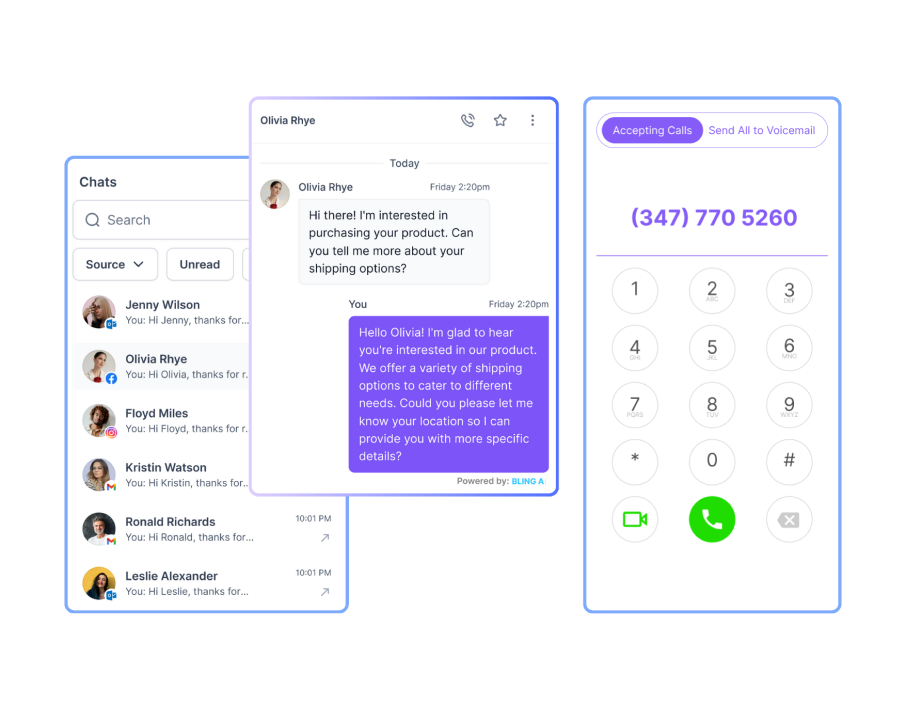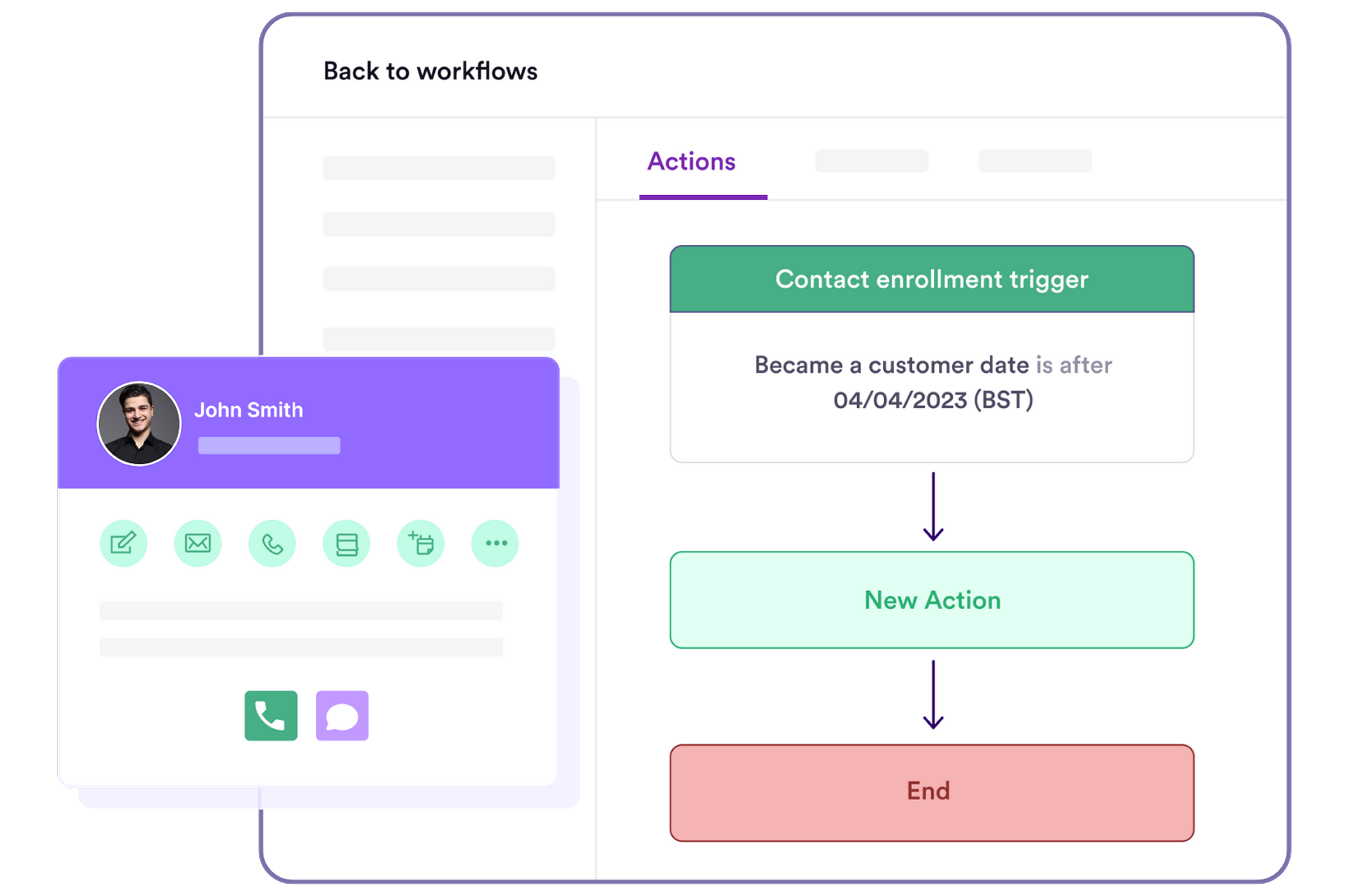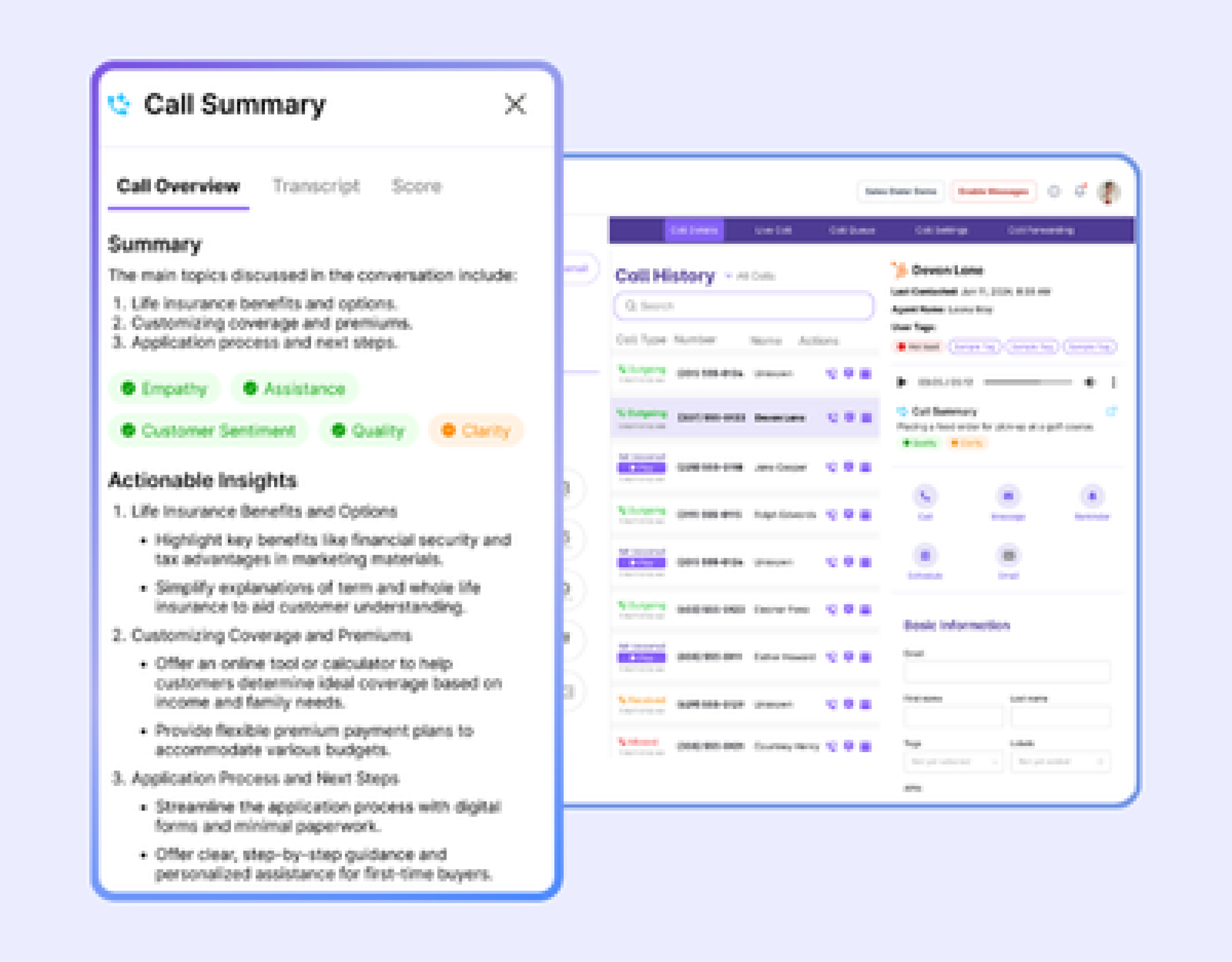Boost outreach with remote ready and ultra flexible call center software
Effortlessly automate complex workflows, monitor your call center’s progress in real time, and enhance compliance with Bling AI powered call center software.

Effortlessly automate complex workflows, monitor your call center’s progress in real time, and enhance compliance with Bling AI powered call center software.


Bling provides everything you need to connect, collaborate with your team, and engage customers seamlessly.
Enhance efficiency with seamless integrations across tools. Eliminate manual tasks and focus on what truly matters smart selling.
Monitor and assess your team’s progress to make informed decisions on quotas and targets, boosting ROI.
Effectively train and guide teams to turn leads into customers with enhanced prospecting strategies.
Onboard new agents fast and expand services globally with local, virtual, and toll-free numbers.

Quickly migrate teams, communication, and data to an AI-driven platform, enabling smooth communication with synchronized workflows anytime, anywhere.

Smart Call Routing
Ensure efficient service during peak hours by routing calls to the right expert agent at the right time.
Call Recording
Record and track every call on your numbers to monitor team performance more effectively. Easily share these recordings for further analysis.
AI Transcript Analysis
Transcribe calls with AI to identify key moments and accelerate agent ramp-up for improved prospecting.
Boost Outreach with Sales Dialer
Speed up your sales pipeline with dialing automation. Increase outreach and close deals faster than ever.
Live Queue Callback
When agents are busy, inbound customers are listed in the Live Queue Box, giving them the option to request a callback for later attention.
Unified Inbox
Collaborate and connect with teams in a single platform. Monitor team performance and provide real-time coaching for better results.
Effortless CRM Integration
Integrate your voip phone service with your preferred CRM and tools, such as Zapier, HubSpot, PipeDrive, Salesforce, and more, streamlining your workflows and improving customer interactions.
Auto-Text Responder
Send automated text messages based on your rules, such as a missed call, voicemail or an update to a custom field.
Custom Roles & Permissions
Control and manage access to analytics, billing, and other sensitive information within your business phone system.

Create your favorite Zap by clicking here
Choosing the right call center calling software is a key decision that can drive the success of your business. The ideal solution should offer the features, integrations, and support that align with your goals. As you evaluate your options and test different outbound call center software, keep the following factors in mind.
1. Features to look for: A good, all-round outbound call center solution should offer tools to improve efficiency and productivity, such as:
Automated call distribution (ACD): Routes calls to the right agents based on availability and expertise.
Predictive dialing: Automates dialing and skips unanswered calls or voicemails, allowing agents to spend more time talking to prospects.
Omnichannel capabilities: Supports multiple communication channels like phone, email, SMS, and chat for a unified experience.
Skill-based routing: Matches calls to agents with the right expertise for quicker resolutions.
Call queues: Manages high call volumes effectively by organizing incoming calls into a queue.
Voicemail and call recording: Enables tracking, review, and storage of interactions for quality assurance.
Call monitoring and coaching: Provides managers with real-time insights to support and train agents during live calls.
Automation tools: Includes IVR, chatbots, and call deflection to streamline operations and reduce manual tasks.
Can you do without some of these features? Sure, but it’s going to be a hassle. A good call center calling software should effectively integrate all these features so that your outbound call center operates smoothly.
2. Integration capabilities: Your call center solution should integrate seamlessly with your existing tools and systems. Look for compatibility with:
CRM software: To manage customer data and improve personalization.
Marketing platforms: For better lead tracking and campaign coordination.
E-commerce tools: To enhance sales processes and customer transactions.
Help desk software: For streamlined customer support.
Integration not only boosts productivity but also ensures smoother workflows for your sales team and support staff.
3. Scalability and agility: As your outbound call center grows, your software should grow with it. Evaluate whether the solution can handle increased call volumes or additional users without performance issues. Also, ensure it’s flexible enough to adapt to changing business needs, such as adding new features or channels.
4. Time to value (TTV) and total cost of ownership (TCO): Understand how quickly the software can deliver results and generate ROI. Consider:
TTV: How soon the software can be deployed and effectively used by your outbound call agents.
TCO: Evaluate upfront costs, subscription fees, maintenance, and any hidden expenses over time.
5. Agent and customer experience: Great software should improve the experience for both agents and customers. Look for:
User-friendly interfaces: Simplifies workflows and reduces training time for your team.
Real-time insights: Helps agents deliver timely and personalized responses.
Customer satisfaction tools: Such as surveys or sentiment analysis, to monitor and enhance the customer journey.
6. Synchronization and collaboration: Ensure the software keeps your outbound call center aligned by facilitating communication and collaboration across teams. Shared dashboards, reporting tools, and unified workflows can help your organization stay on the same page and meet common goals.
By focusing on these points, you can confidently choose the outbound call center software that best fits your needs, enabling your sales team to perform at its highest potential and setting your business up for lasting success.
Power dialer: It automates dialing numbers one by one and connects agents to customers, eliminating the need for manual dialing.
Predictive dialer: Unlike power dialers, predictive dialing dials numbers from a predefined list and connects agents only when a live person answers the call. This significantly reduces idle time and increases efficiency.
Click-to-call: This feature allows agents to place calls directly from their CRMs with a single click, streamlining and fastening the calling process.
Call recording and monitoring: Records calls for quality assurance, training, and compliance purposes. Supervisors can also listen to live calls and provide real-time feedback to agents.
Voicemail: The option to leave pre-recorded voicemails saves the time agents spend on repetitive tasks and ensures consistent messaging.
CRM integration: Integration with popular CRMs provides agents with visibility on customer information and interaction history. This leads to more personalized interactions and better customer experience.
SMS integration: SMS integration in call center software enables agents to send and receive SMS messages in addition to making outbound calls. This provides them with an additional channel for communication and conversions.
Local presence: Having a local phone number gives your business a domestic appearance and increases the likelihood of calls being answered. This enhances the effectiveness of outbound call campaigns.
Call scripting: This feature provides agents with scripts to maintain consistency and compliance during calls. Call scripting thus helps maintain a uniform and professional approach.
Analytics and reporting: This feature helps in making data-driven decisions by offering detailed reports and analytics on agent performance, call metrics, campaign effectiveness, and so on.
Call coaching: Supervisors can listen to live calls and provide real-time guidance to agents, improving performance and customer interactions.
Omnichannel support: Supports a variety of communication channels (voice, email, chat, and social media), ensuring a unified customer experience across multiple touchpoints.
Automation tools: Includes features like Interactive Voice Response (IVR), call deflection, chatbots, and virtual hold for streamlined operations and enhanced customer service.
Scalability and flexibility: The flexibility to scale up or down, add or remove agents, or transition to a remote call center workforce as the business grows.
Optimized lead management: Outbound calling software allows agents to assign lead lists, prioritize contacts, and guide them during conversations. This helps them spend more time talking to leads and less time searching for them.
Minimized manual labor: With auto-dialing solutions, agents no longer need to dial numbers manually. They can also wrap up calls with appointment bookings, notes, and more. If a lead doesn't answer, agents can instantly record a message or send a pre-recorded one, bypassing the recipient's voicemail.
Increased follow-ups: Top-tier software allows agents to quickly set appointments during calls and provides reminders for follow-ups, ensuring your company remains top of mind before leads turn to competitors.
More deals closed: By freeing up more time for agents to engage with warm leads, they can focus on meaningful conversations and closing deals. Reduced manual tasks mean agents can interact with more leads overall.
Improve caller experience: Agents who have access to client notes and past interactions can offer more personalized conversations, significantly enhancing the caller experience.
Insights into customer journey: Collect analytics on agent interactions, such as time spent with leads and the effectiveness of follow-up calls. This data helps improve the sales strategy and customer support for a call center platform.
Accelerate training: New agents can benefit from a trusted interface that provides all necessary resources for any conversation scenario, speeding up the training process.
Consistent outcomes: Recording and reviewing calls allow your business to develop proven tactics, scripts, and guides, leading to more consistent interactions.
Maximized agent efficiency: Utilize agents' strengths by automatically routing calls to the best-suited agent. This ensures smoother conversations and enhances the overall experience.
Reduced software costs: While costs vary, the best outbound call tracking software reduces overall expenses by offering flexible data storage and integrated tools to simplify your tech stack.
Outbound call center software enhances sales processes in specific and practical ways, including:
1. Faster connections with real prospects: Predictive dialing eliminates manual dialing and skips busy signals, voicemails, and unanswered calls. This lets agents spend more time talking to potential customers and less time waiting.
2. Smarter lead prioritization: Integrated lead scoring ensures sales teams focus on leads with the highest likelihood of conversion, helping them use their time effectively and close deals faster.
3. Targeted, data-driven outreach: By syncing with CRM systems, agents can access customer history and preferences, allowing them to craft pitches that address specific pain points or interests.
4. Consistent follow-ups: Automated call scheduling ensures no lead falls through the cracks. Agents can set reminders for follow-ups, which is key for nurturing prospects who need multiple touchpoints before converting.
5. Real-time support for agents: Features like real-time call monitoring and AI-powered suggestions help agents respond effectively to objections or tricky situations while they're still on the call.
6. Streamlined multi-channel communication: Agents can easily switch between phone calls, text messages, and emails within the same platform, making it easier to engage prospects where they’re most responsive.
7. Objection handling with call scripts: Dynamic scripting provides agents with proven responses to common objections, increasing their confidence and boosting their success rates.



Yes, outbound calls and cold calling can be automated using the right call center solution. Automation tools, such as outbound dialers, eliminate the need for manual dialing and streamline the calling process. They also enable features like scheduling, call personalization, and data tracking. This automation not only increases efficiency but also reduces human error and improves the overall customer experience.
Finally, you can use voice bots like Bling’s AI Voice Agent to handle routine or repetitive outbound calls, such as appointment reminders, payment follow-ups, or initial outreach. These bots can engage customers with natural, human-like conversations, collect responses, and even route calls to a live agent if needed. This ensures seamless customer interactions and improves productivity in your call center.
Outbound call center software typically works by allowing sales teams or call center agents to make outgoing calls to customers or potential customers. It streamlines outreach efforts by automating repetitive tasks, boosting call volumes, and enhancing efficiency.
Inbound calling software for call centers, on the other hand, helps handle incoming customer queries. It includes features like call routing, callback, and chatbots. Inbound calls are usually more complex and time-consuming than outbound calls. Hence, they require more experienced and efficient call center agents.
Most call centre calling software operates in a similar manner. It’s either an app or a browser-based platform that agents can access with a unique login. All that’s required to run it is an internet connection.
When customers or leads call in, the system uses an IVR menu to route the caller to the appropriate department and agent, who will have the customer’s information displayed. Customer interactions, cases, tickets, and other data are stored in the cloud-based system for future review.
Tracking outbound call center activities is important for optimizing daily operations, ensuring quality control, and maintaining high performance. To do that, you need to monitor some critical metrics like:
Call monitoring also involves utilizing tools like live monitoring, outgoing call recording, and CRM integrations, and leveraging analytics. Call scripts and predictive dialers also gather customer feedback and performance reviews to improve agent efficiency and service quality.
Outbound call center software helps organizations manage their outbound calling operations. It automates repetitive tasks like dialing numbers, tracking call outcomes, and scheduling follow-ups. This creates a streamlined workflow for agents, allowing them to spend more time engaging with potential customers rather than managing contact lists.
Call center calling software also integrates with popular CRMs so that customer service teams can access customer data and tailor meaningful conversations. It also offers real-time tracking and analytics, enabling managers to monitor agent performance, assess campaign success, and make data-driven decisions.
Both outsourced and in-house call centers have their pros and cons. Businesses should closely examine these before making a decision either way.